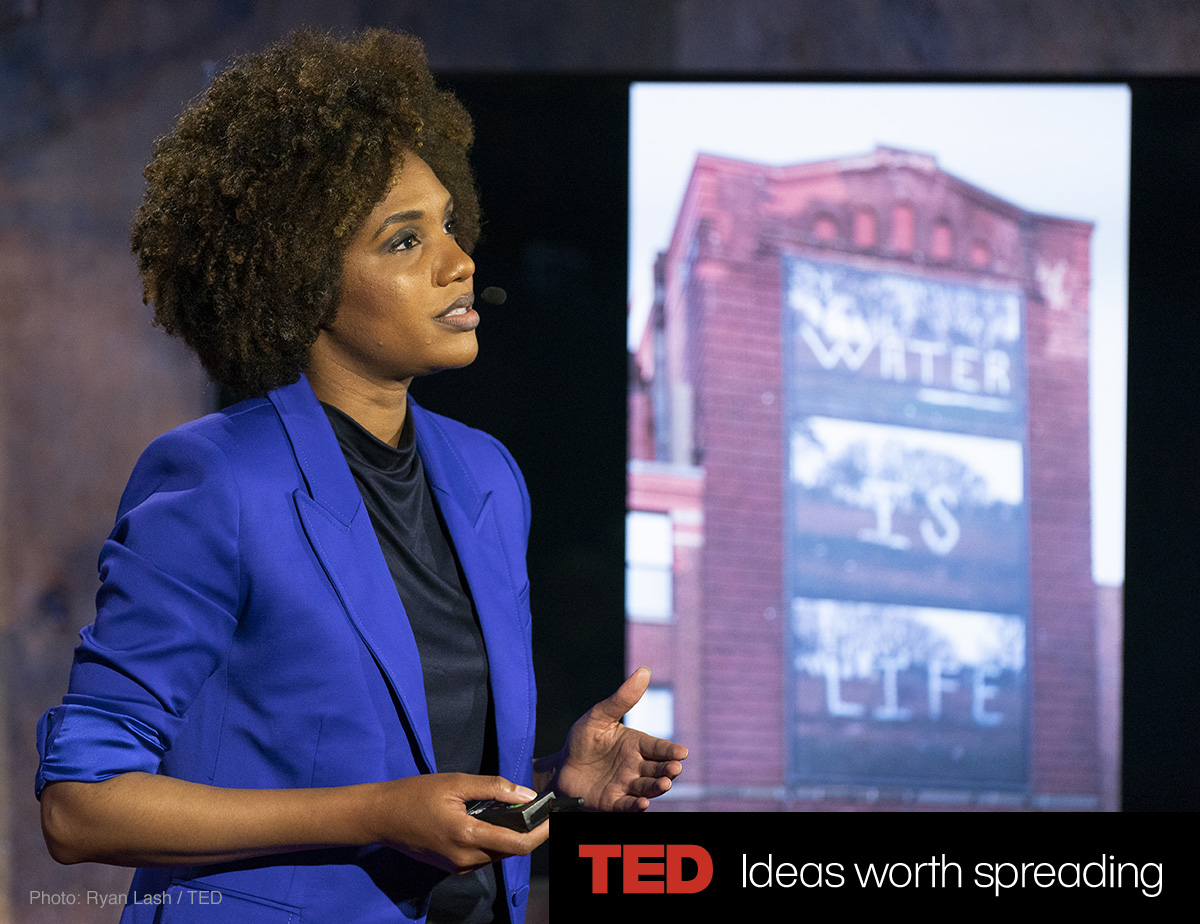CLOSE-UP: AMERICAN IDLE — Zack Hatfield on LaToya Ruby Frazier’s “The Last Cruze,” 2019
Artforum
By: Zack Hatfield
Frazier has always addressed the untenability of how things are with an art that pushes beyond the purview of representation, one that prioritizes the assembly of communities and archives over commodities.
PEOPLE IN MOTION. This was General Motors’ slogan when Sherria and Jason Duncan were hired at the company’s factory on the edge of Lordstown, Ohio, around the turn of the millennium. Sherria’s mother, Waldine Arrington, retired from the assembly plant in 2004 and now helps care for her granddaughter Olivia. A recent photograph finds the four of them at a bare kitchen table, frozen: Sherria and Waldine sit side by side, while Jason, hands clasped, hunches across from Olivia. In profile, the child meets her father’s tired gaze; the two women look directly at the viewer. The sight lines form a crossroads.
These lives all revolve around the factory, or did. The news arrived from GM on the Monday after Thanksgiving 2018: Due to the sinking demand for compact cars, the plant would stop manufacturing the Chevrolet Cruze, its sole product. Lordstown Assembly, the backbone of the region since 1966, was being idled. The corporation soon began sending forced-transfer letters to all of its unionized employees, an ultimatum notorious for breaking households apart: Keep your job and pension by resettling to another factory, perhaps thousands of miles away, or lose everything.
LaToya Ruby Frazier has always trained her camera on families dealing with fallout. Her black-and-white portraiture, incisive without ever seeking to betray what her subjects have not chosen to show, is about the relentless but often abstract forces of neoliberalism and how they make and unmake working-class homes, starting with her own. The artist’s earliest series, begun in 2001 when she was a teenager, chronicles the postindustrial declension and pollution-borne maladies of her native steel town of Braddock, Pennsylvania, mostly through images of her grandmother Ruby; her mother, Cynthia; and herself. These culminated in the 2014 photobook The Notion of Family, an unsparing document of looking and loving amid economic and bodily decline. Since then, Frazier has continued to picture small-town sagas with a multigenerational scope, subtle ingenuity, and global import, whether covering the water crisis in Flint, Michigan, or shooting in the depressed coal-mining area of Borinage, Belgium. While ostensibly grounded in the now-unfashionable American traditions of Lewis Hine and Dorothea Lange, her photographs reject the flattening lens of iconicity, centering individuals’ own words in accompanying texts. Frazier often works on assignment for magazines and newspapers, her photos strategically combating the stereotypes and omissions characteristic of the mainstream media’s representation of the working class. The most persistent and insidious omission—the absence of people of color in portrayals of American blue-collar life—is challenged in Frazier’s art, where the intersections of class with race and other facets of identity are dramatized alongside the structural inequalities within racial capitalism.

This latest counternarrative, “The Last Cruze,” is devoted to Lordstown Assembly and its union, Local 1112 of the United Auto Workers. Conceived for the Renaissance Society in Chicago in 2019 and subsequently exhibited at the Wexner Center for the Arts in Columbus, Ohio, the series pairs more than sixty portraits of Lordstown workers and retirees with typed oral histories that collectively form an archive of the culture of the plant and the events that unfolded there. Partnered with the New York Times Magazine, Frazier began visiting Lordstown a month before the last Cruze rolled off the assembly line in early March 2019. But unlike the national press, which largely construed the idling of the plant as a flash point for Trump’s broken campaign promise to blue-collar constituents, she was there for the aftermath, her narrative fracturing the mythology of a white working class. She built rapport with union members across lines of gender, sexuality, and race as they continued to clock in, and then, after the last Cruze was finished, she stayed while her newly unemployed subjects wrestled with the question of whether to uproot themselves or wait to see if the UAW’s impending contract negotiations with Detroit’s Big Three automakers would result in Lordstown’s getting a new vehicle to manufacture. In recent years, GM has shifted its production abroad, where some employees earn as little as a couple of dollars an hour.






